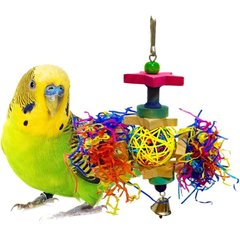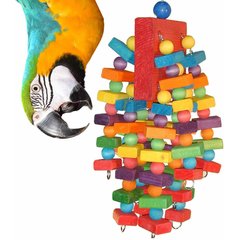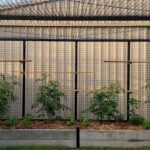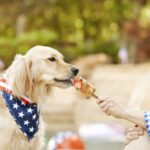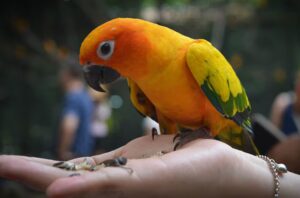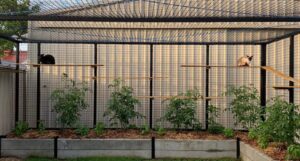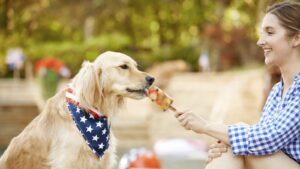Bird Body Language 101: Find Out What Your Pet Bird Is Trying to Tell You
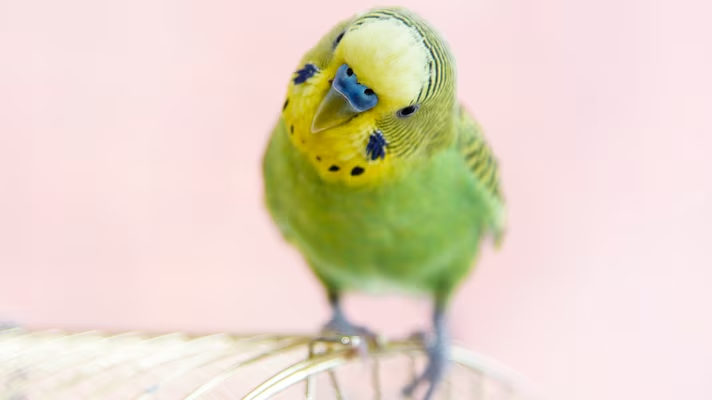
Photo by Lusyaya/iStock/Getty Images Plus
Parrots are known for their speaking ability, but most pet birds can’t actually carry a conversation. So how do you know what your feathered friend is thinking and feeling? Reading bird body language, from head bobbing to sounds to flapping wings, can help you to not only understand what your pet is feeling, but also develop a stronger bond with them. Some actions can even tell you when they’re sick or injured.
We spoke with two pet bird experts to decode parrot body language, from physical movements to vocalizations:
- Dr. Karen Rosenthal, DVM, director of exotic companion animal education for Veterinary Emergency Group in New York City.
- Dr. Laurie Hess, DVM, an avian and exotic pet veterinarian and owner of the Veterinary Center for Birds and Exotics in Bedford Hills, New York.
How Do You Read a Bird's Body Language?
Since most pet birds’ vocabulary is limited or non-existent, you have to take into account all of their actions, movements, and sounds, just like you would with other animals. And it’s especially important to view everything as pieces of one big puzzle because some behaviors can have multiple meanings.
“You have to look at the whole [picture] of their body movements, not just a single activity to interpret what the bird’s doing,” Dr. Hess explains.
Read on to find out what common bird behaviors mean and whether they’re normal or a cause for concern.
Eyes
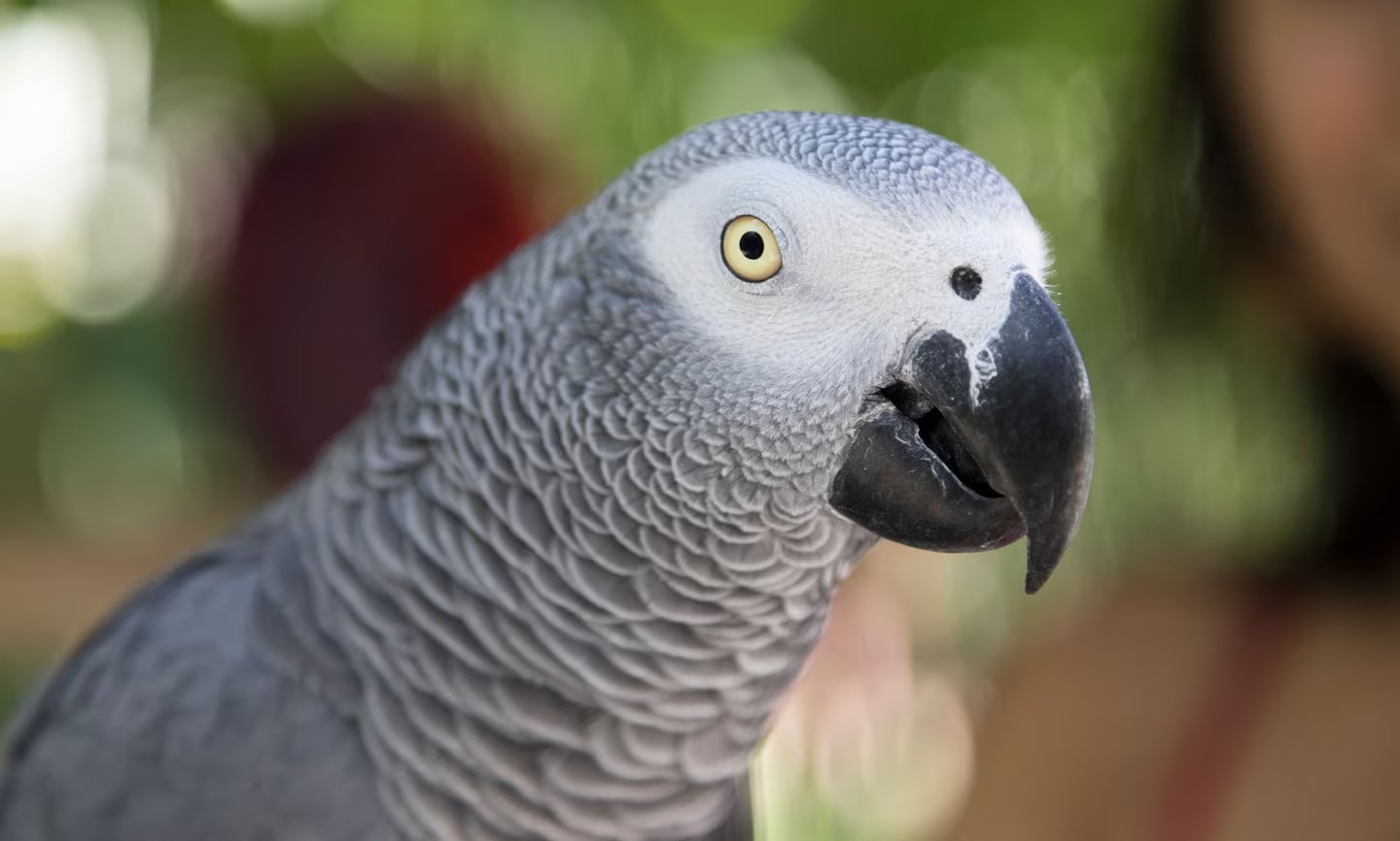
Photo by iStock.com/patrickheagney
Eye Pinning
Unlike humans, birds have voluntary control over their eye muscles. Eye pinning happens when a bird quickly changes the size of their pupils, rapidly dilating and constricting their pupils. This behavior is sometimes called eye flashing or eye blazing, too.
Possible Meanings
Birds use eye pinning as a way of telling another bird or a person, “I am interested in you” or “I don’t want you anywhere near me,” says Dr. Rosenthal. It’s basically a way for them to communicate their feelings, whether they’re happy, excited, angry, afraid or any other emotion. You’ll want to look at the context clues to pinpoint which emotion they are actually feeling.
- They’re excited. When eye pinning is coupled with tail wagging or flaring of the tail, that’s usually a sign of excitement, Dr. Hess says.
- They’re stressed. If a bird is repeatedly opening and closing their pupils, that’s usually a sign that they’re stressed, according to Dr. Hess.
- They’re alert. It could also indicate that your pet bird is on high alert. “It’s like, I’m aware of my surroundings. Something’s going on,” Dr. Hess explains.
Head Movements

Photo by iStock.com/digihelion
Head Bobbing
Head bobbing looks like a bird nodding their head up and down or forward and backward.
Possible Meanings
- They’re hungry. Head nodding is a normal behavior seen in baby birds. “It is telling Mom or Dad to ‘feed me, please,’’’ Dr. Rosenthal says. “In a chick that is being parent- or hand-fed, we want to see this behavior, as it tells us the baby bird is healthy and has a healthy appetite.” Sometimes adult birds will continue bobbing for food if they understand that you’re their caregiver (since you’re kind of taking the place of a mama bird).
- They’re excited or want attention. Head bobbing in adult birds could also indicate that they’re excited or want attention. “It can be excitement but also happiness and playfulness,” Dr. Hess says.
- They’re trying to see better. “Their eyes are on the sides of their heads … so when they move their head around, they may be trying to take in their surroundings around them, as opposed to just looking directly in front of them,” Dr. Hess explains.
If you’re not sure why your bird is bobbing their head or they suddenly start doing it, check with your vet to make sure they’re not sick.
Head Shaking
Head shaking looks like a bird moving their head from side to side.
Possible Meanings
- They have an ear infection. “An ear infection is not always an emergency, but because it is uncomfortable, we recommend that owners seek help right away for their bird,” Dr. Rosenthal says.
- There’s a problem with the bird’s crop. The crop is a pouch on the front of a bird’s neck above their chest. Birds use the crop to store food, and if there’s something wrong with it, like a crop infection, there could be a buildup of food.
- They have another type of illness. Some other possible illnesses include a common bacterial infection called psittacosis (also known as chlamydiosis or parrot fever) and air sac mites.
Like with any behavior, if your pet bird starts shaking their head continuously or if it’s a new behavior, take them to the vet to get checked out.
Vocalizations
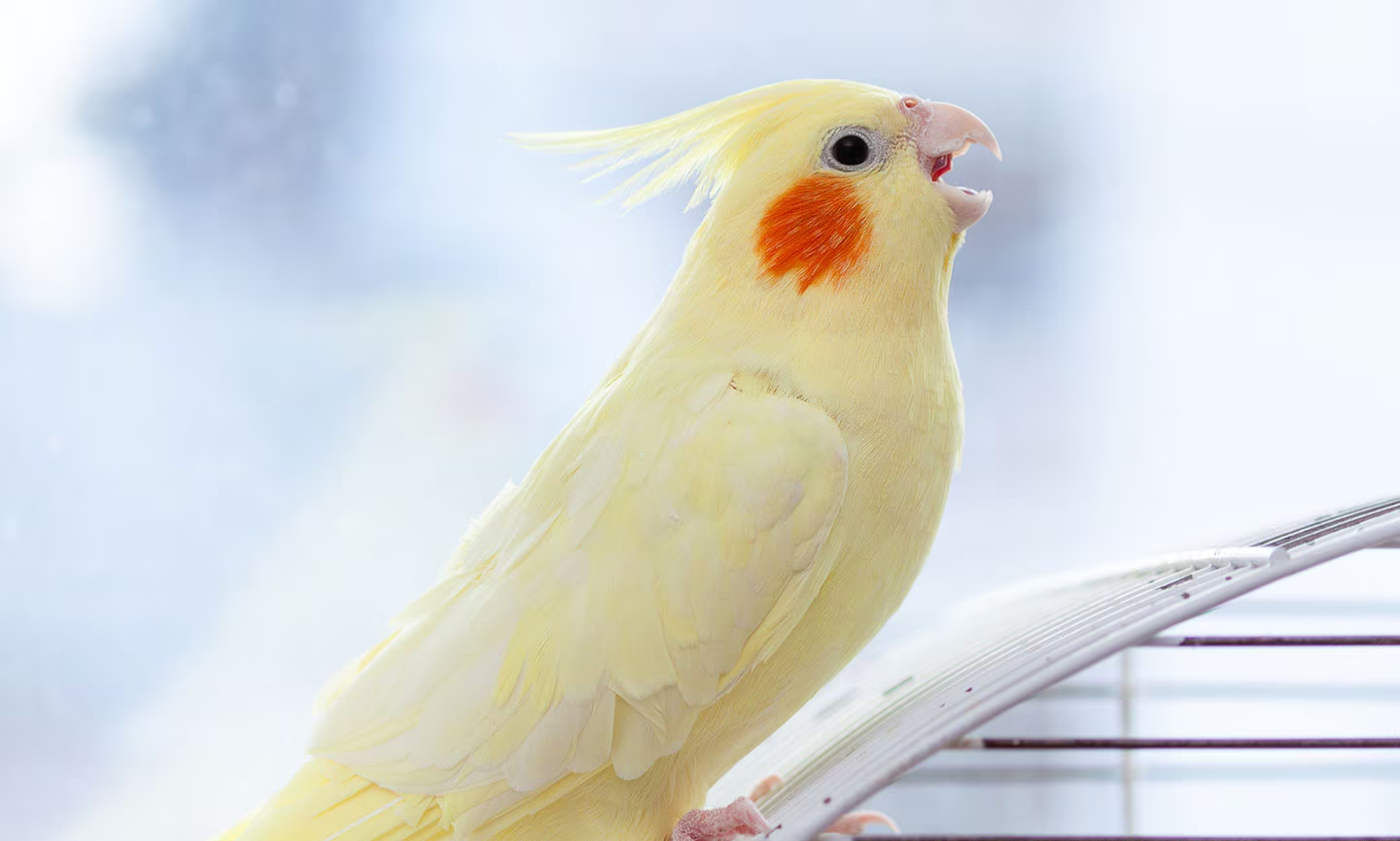
Photo by iStock.com/Vitaliia Hryshchenko
Growling
A bird growling sounds like a low or deep rumbling sound.
Possible Meanings
- It’s a sign of aggression. Growling in birds is a sign of aggression and means they don’t want anyone coming near them. When you hear growling, your pet might be feeling stressed, anxious, or threatened by something in their environment, and you should leave your bird alone to calm down. This is most common in cockatiels and African grey parrots.
Chattering
This sounds almost as if they’re talking to themselves.
Possible Meanings
- They’re happy. Chattering is perfectly normal and usually a sign of contentment.
Screaming
Birds are naturally vocal, but may let loose an especially high-pitched scream or squawk.
Possible Meanings
- They’re frightened: Is your bird’s scream an alarm call? Check for something that has scared your bird. Always provide a place for your bird to retreat to and feel safe from perceived dangers.
- They’re hurt. Always keep your avian veterinarians number easily available.
- They’re overexcited. The louder and more exciting the surroundings, the louder and more excited birds can become. Take a deep breath and lower your energy level. Talk calmly or whisper. When receiving desired responses, always reward with positive reinforcement. “Good girl/boy!” will go a long way.
Beaks
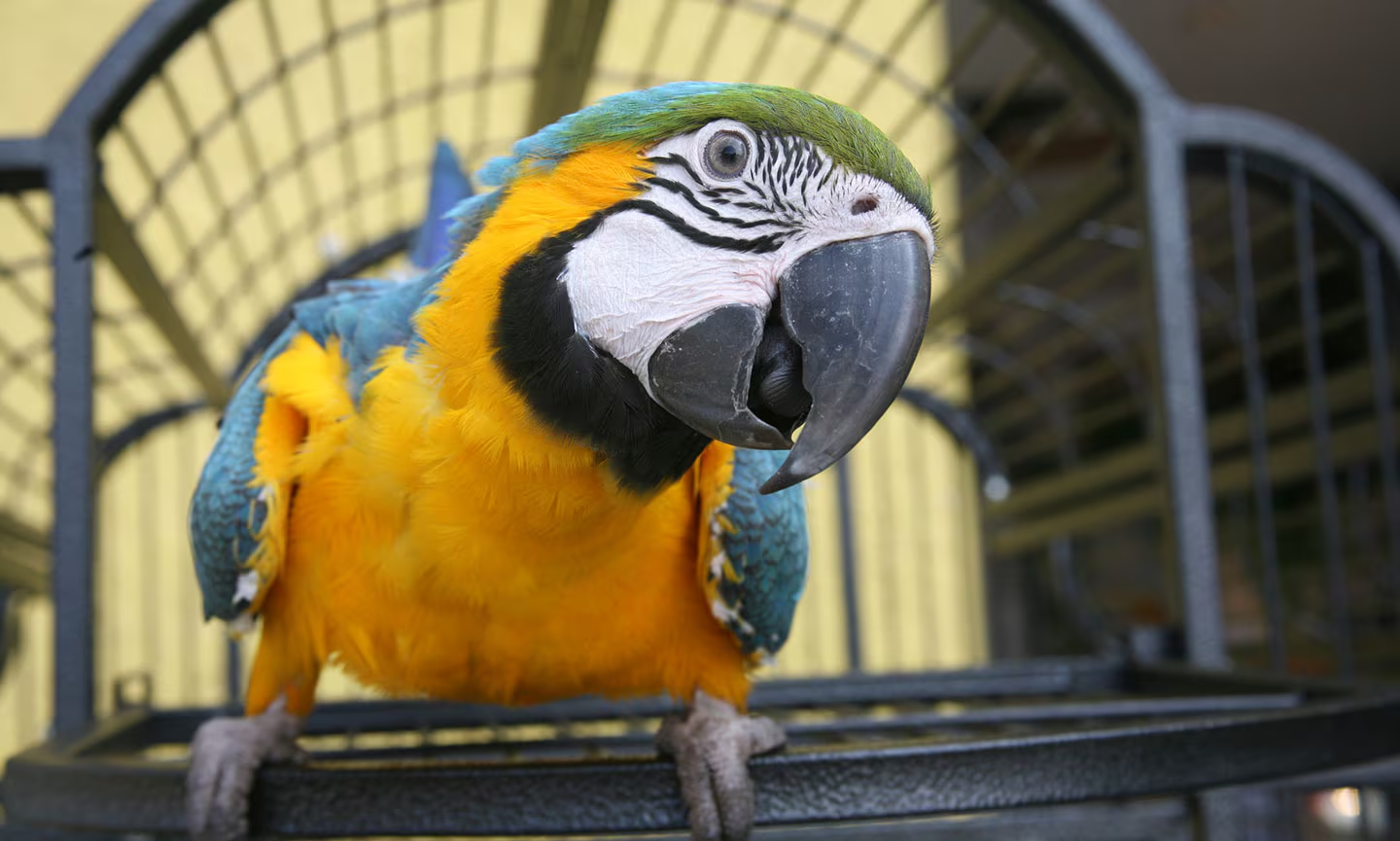
Photo by iStock.com/ngirish
Beak Grinding
Birds will sometimes rub the upper and lower portions of their beak together, kind of like teeth grinding in people. You might hear a scratching type of sound when your pet does this.
Possible Meanings
- They’re relaxed. Beak grinding can be a habitual or “self-comforting” behavior, according to Dr. Hess. It indicates that your bird is feeling calm, and is often seen around bed time as the bird winds down.
Beak Clicking
Birds make clicking sounds with their beaks by closing their upper beak against the lower portion. Some types of birds will make a clicking sound with their tongue or throat.
“It is mainly seen in cockatoos and macaws … Most importantly, it is not a sign of disease or illness,” Dr. Rosenthal explains, adding that it’s a completely normal behavior.
Possible Meanings
- They’re content. Beak clicking is very similar to beak grinding. According to Dr. Hess, it can be a self-soothing or habitual action. It generally means your pet is happy.
Note: Beak clicking is different from snapping, which is an aggressive behavior. If your bird is snapping and lunging, that’s a clear sign they don’t want you near them at the moment.
Beak Wiping
Sometimes you might notice your bird rubbing or brushing their beak back and forth on their cage or on a perch.
Possible Meanings
- They’re cleaning their beak. If your bird is wiping their beak, it’s probably because there’s some food stuck on or inside it. Dr. Hess says it’s like how we would use our hand or a napkin to wipe our face. Since birds don’t have hands, they have to use their tongue, cage, perch, or another object to try to remove whatever is stuck.
Feathers
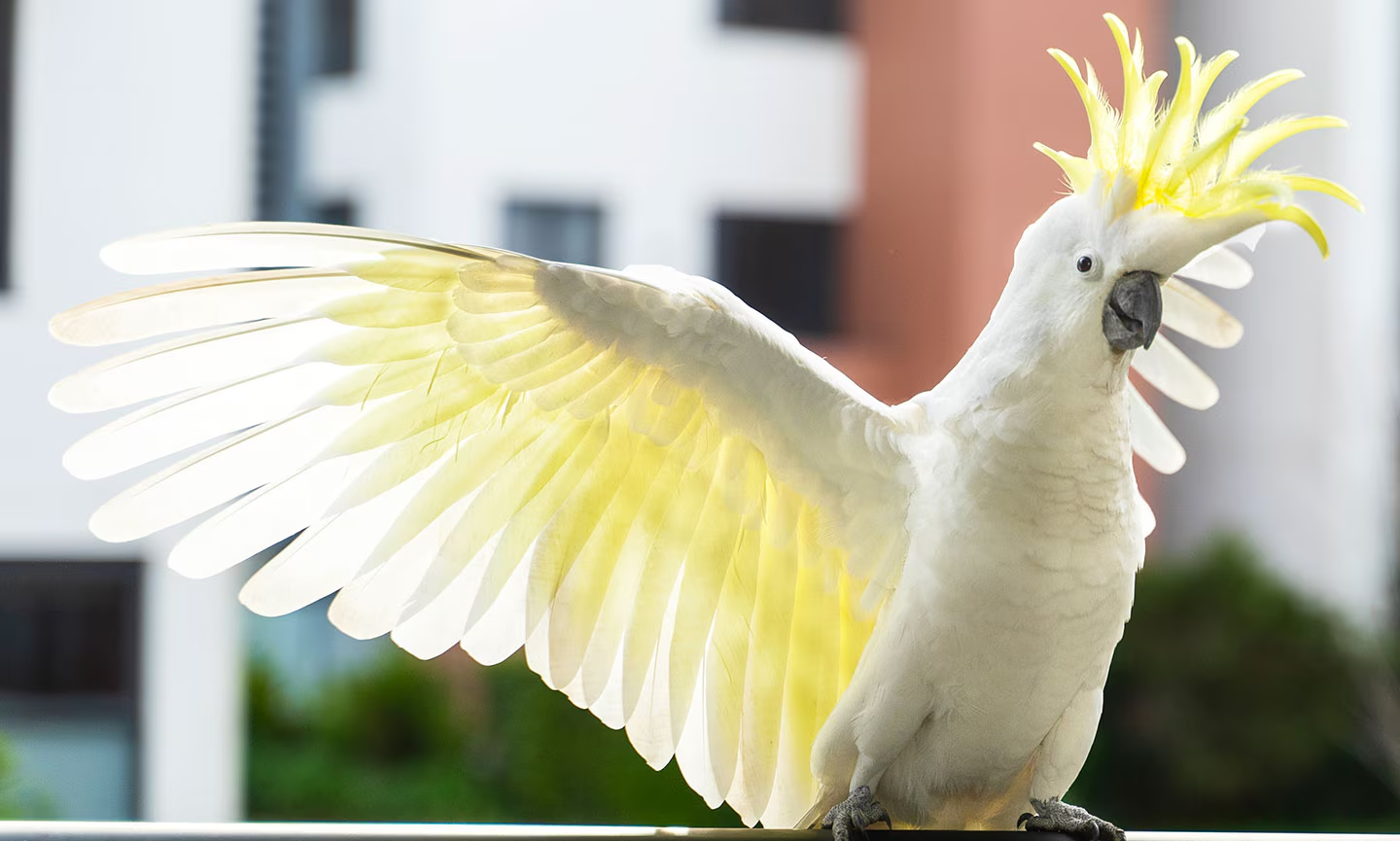
Photo by iStock.com/Julia Gomina
Tail Wagging
Tail wagging looks like a quick side-to-side motion of a bird’s tail feathers.
Possible Meanings
- They’re excited. If you’re doing something your bird enjoys, like giving them food or attention, and they start wagging their tail, it’s probably because they’re excited. It’s similar to how a dog’s tail wagging can indicate excitement or happiness.
- It’s a warning. Sometimes it can be a warning. “Like, ‘Don’t come near me because I’m really highly energized right now,’” Dr. Hess says.
Like with all bird behaviors, you’ll have to look at the rest of your pet’s body language to understand whether they’re wagging their tail because of excitement or something else.
Fluffing
“When birds fluff their feathers, we refer to a behavior called piloerection,” Dr. Rosenthal says. “The muscles in the skin cause the feather to stand up rather than lay flat on the body.”
If your pet bird is fluffing their feathers, they’ll probably look much rounder and wider than usual.
Possible Meanings
- They’re ill: “When a bird is sick, we see a fluffed appearance,” Dr. Rosenthal says. “Some believe a bird that is feeling sick is trying to trap air between the feathers and the body to get warmer. Potentially, this behavior raises the body temperature, which helps fight disease.”
- They’re trying to appear bigger to scare off predators: While pet birds typically don’t have to worry about predators, they may still perform this behavior if they feel threatened by something. “They still have some deeply ingrained behaviors from their ancestors’ days of living in the jungle, such as trying to avoid being eaten by predators,” Dr. Rosenthal adds.
- They’re cold: Similar to when they are sick, they may be trying to trap air between the feathers and the body to get warmer.
The important thing to know is that persistent fluffing, especially with other signs of sickness, might warrant a vet visit.
Preening
“Preening is a fancy term for feather maintenance,” Dr. Rosenthal says. This behavior looks like rubbing their head or beak along their bodies and stroking and repositioning feathers.
Possible Meanings
- They’re just grooming themselves: Birds clean their feathers frequently to maintain their groomed appearance. Preening removes food, dust, dirt, and other substances from their bodies. They also do this to put their feathers back into place if they get ruffled.
Note: Since preening is a normal behavior in healthy birds, you should be concerned if your pet stops doing it. “Sick birds do not want to move. They want to conserve energy, and the first thing they stop doing when they are sick is to stop preening,” Dr. Rosenthal explains.
Dr. Rosenthal adds, “If a bird no longer has shiny feathers in place, is not sticking [their] head under [their] wings to put feathers back in place, or has dirty feathers, assume the bird is sick.”
Plucking or Picking
Feather plucking or picking, aka feather destructive behavior or FDB, is when a bird uses their beak to pull at (and sometimes pull out) their feathers.
“Usually, birds will pull out chest, wing and tail feathers,” Dr. Rosenthal notes. “Uncommonly, some birds (especially cockatoo species) will use their very powerful beak to pick at their skin and underlying muscles of the pectoral region.”
Possible Meanings
- There’s a behavioral problem: This behavior isn’t well understood, according to Dr. Rosenthal, but it could be a sign of a behavioral issue. It’s not an emergency, but it does need to be discussed with an avian veterinarian as soon as possible. The longer the condition goes on, the harder it is to stop, since the feather follicles can become so destroyed that feathers never grow back.
Feather plucking is an emergency if you see blood or if your bird starts picking at their skin under the feathers—in that case, take your pet to the veterinarian ASAP. If this happens, your bird can lose too much blood, develop infections, or be unable to keep themselves warm.
Tail Flaring or Tail Fanning
You’ll know your bird is tail flaring if they spread their tail feathers out wide like a fan. This is a totally normal behavior for birds, says Dr. Rosenthal.
Possible Meanings
- They’re excited: Tail flaring, like wagging, can be a sign that your bird is excited about something.
- They’re feeling defensive: Birds will sometimes fan out their tail feathers around predators to make themselves appear larger and less vulnerable. Though pet birds are unlikely to run into many predators, they might consider another pet or an unfamiliar human to be a threat to them. Your bird might be warning you (or whoever they’re scared of) to stay away.
Raising the Crest
The crest, or crown, is a group of feathers on some types of birds’ heads. The crest is longer than the surrounding feathers. Birds can control these feathers to lift them up or down against their head.
“This behavior is seen mostly in cockatoos and cockatiels and is not associated with an emergency or disease,” Dr. Rosenthal says.
Possible Meanings
- They’re excited: Raising the crest feathers indicates that your bird is excited. This could be “any kind of excitement. [It] doesn’t necessarily mean [something] negative,” Dr. Hess says.
- They’re alert: Your bird might also be on high alert and noticing what’s happening around them. There might just be a lot of activity in your house, and your bird is taking it all in. Dr. Hess says that the bird is saying, “I’m aware of my surroundings. Something’s going on.”
- They’re courting: Male birds will often raise their crest when courting a female to make themselves look more impressive.
Flapping Wings
Flapping wings is pretty self explanatory—it looks like a bird moving their wings while standing or perched on an object (and not while flying).
Possible Meanings
- They’re exercising: “Sometimes birds will do this for a little bit of exercise,” which is normal, Dr. Rosenthal says.
- They’re excited: This behavior can sometimes be a sign of excitement or that your bird is seeking attention. Again, pretty normal.
- They’re having trouble balancing: It can be a problem if your bird is flapping their wings for balance, kind of like how you would put your arms out to try to steady yourself. “Flapping wings to maintain balance is an emergency as it may relate to a neurologic disorder or any condition that prevents a bird from balancing on a perch,” Dr. Rosenthal explains. “This puts them at risk of falling off the perch, fracturing bones, and bruising soft tissue, causing even more disease in an already sick bird.”
Here’s how you can tell the difference between normal and abnormal wing flapping: Normal wing flapping stops quickly, and afterward, the bird is standing on the perch or some flat area and is interested in the next adventure. A bird who is flapping because of balance issues does not stop flapping their wings, and when they do stop, they look unsteady.
If you think your bird is flapping because they’re not able to balance, take him to be seen by a vet as soon as possible.
Take a screen shot of the chart below for quick reference the next time your bird tries to communicate with their body language.
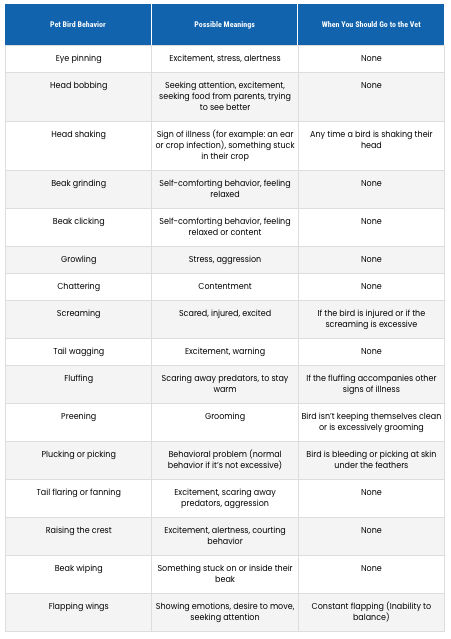
Photo by Chewy
Bird Body Language FAQs
Q: How do you know if birds like you?
A: You’ll know if your bird likes you if they enjoy spending time with you. They may like when you pet them and show excitement when you walk into the room or approach their cage. Flapping wings, head bobbing, and eye pinning are some signs that your pet is excited to see you. And for birds that can speak, they’ll talk to you, too.
“When birds are comfortable around you, they don’t lean back, they don’t lunge, and their feathers are smooth and not puffed up. They’re relaxed,” Dr. Hess says.
Q: How do you know if a bird doesn’t like you?
Q: How can you tell if a bird is feeling aggressive?
Q: How can you tell if a bird is feeling stressed?
The Importance of Providing Enrichment
Birds who don’t get enough attention or don’t have an outlet for their energy can become bored or sad, which can cause them to perform some of those unhealthy behaviors, such as feather picking. To keep your bird happy and healthy, give them fun toys to entertain themselves.
“We highly recommend having species-specific toys in the enclosure and any place the bird stays in the home,” Dr. Rosenthal says.
Recommended Products
And of course, be sure to pay attention to and spend lots of time with your feathery friend. “There are so many things that you can do to stop your bird from getting bored, and most of them involve you!” Dr. Rosenthal says.
One fun activity to do with your pet bird is training them. “Training your bird to learn certain behaviors is fun for you and your pet bird … Not only does this increase your time with your bird, which is what your bird craves (time with you), but it also gives your bird a job. It is the first step to a well-behaved, well-adjusted pet bird.”
Understanding what your BFF (Best Feathered Friend) is trying to tell you can sometimes be challenging, especially if it’s a new bird. “Trying to learn bird body language with your first bird can be very frustrating and cause some misunderstandings between you and your bird,” Dr. Rosnethal says. Be patient. The end result is so rewarding and will foster a better, deeper relationship with your pet bird for years to come.
Want to deepen that bond even more? Here are eight games you can play with your bird.
